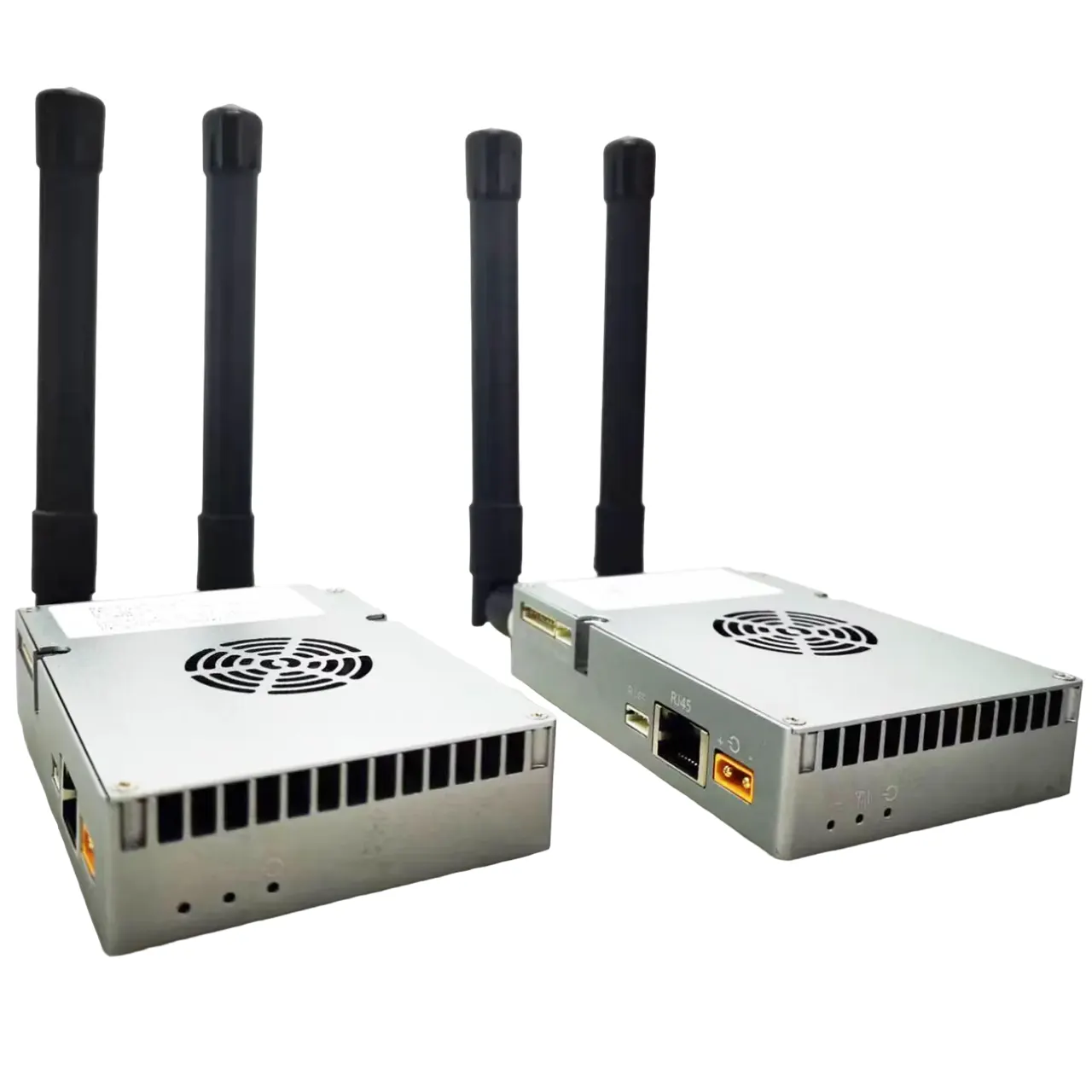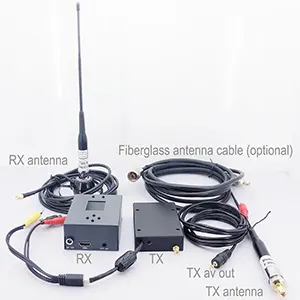DVB-T DVB-T2 TV Module H264 COFDM demodulator decoder tiny PCBA Board, by Sony EW300 diversity chipset
DVB-T DVB-T2 TV Module H264 COFDM demodulator decoder tiny PCBA Board, by Sony EW300 diversity chipset
DVB-T2 tv module 2 Tuner Diversity
Support DVB-T2 and DVB-T both
MPEG4
COFDM wireless video transmitter diversity module






What is a DVB-T DVB-T2 DVB-T Digital TV module? How does it work?
A DVB-T DVB-T2 module is a type of digital television (DTV) receiver module that is used to receive digital television signals. It is based on the Digital Video Broadcasting – Terrestrial (DVB-T) standard, which is a digital television transmission system used in many countries around the world.
The DVB-T DVB-T2 module is typically a small, self-contained device that is connected to a television or other display device. It contains a tuner, demodulator, and decoder, which are used to receive and decode the digital television signal. The tuner is used to select the desired frequency of the digital television signal, while the demodulator is used to extract the digital data from the signal. The decoder is then used to decode the digital data into a format that can be displayed on the television or other display device.
The DVB-T DVB-T2 TV module is typically powered by a USB connection or an external power supply. It is also usually equipped with an antenna, which is used to receive the digital television signal. The antenna can be either an indoor or outdoor antenna, depending on the type of signal being received.
Once the digital television signal is received, the DVB-T module will decode the signal and display it on the television or other display device. The module can also be used to record the digital television signal, allowing users to watch the recorded content at a later time.
The Benefits of Using a DVB-T DVB-T2 TV Module in Your Home Entertainment System
A DVB-T DVB-T2 TV module is an essential component of any home entertainment system. This type of module is used to receive digital television signals, allowing users to access a wide range of digital television channels. The benefits of using a DVB-T module in a home entertainment system are numerous.
First and foremost, a DVB-T module allows users to access a wide range of digital television channels. This means that users can access a variety of different types of content, from news and sports to movies and television shows. This provides users with a much greater range of entertainment options than they would have with an analog television signal.
In addition, a DVB-T module is much more reliable than an analog signal. Digital signals are less prone to interference and are less likely to be affected by weather conditions. This means that users can enjoy a more consistent viewing experience.
Furthermore, a DVB-T module is much more energy efficient than an analog signal. Digital signals require less power to transmit, meaning that users can save money on their electricity bills. This is especially beneficial for those who live in areas where electricity costs are high.
Finally, a DVB-T module is much easier to install than an analog signal. This means that users can set up their home entertainment system quickly and easily, without having to worry about complicated wiring or installation processes.
In conclusion, a DVB-T module is an essential component of any home entertainment system. It provides users with access to a wide range of digital television channels, is more reliable than an analog signal, is more energy efficient, and is much easier to install. For these reasons, a DVB-T module is an excellent choice for any home entertainment system.
Exploring the Different Types of DVB-T DVB-T2 TV Modules Available
DVB-T (Digital Video Broadcasting – Terrestrial) is a digital television broadcast technology used to transmit television signals over the airwaves. It is the most widely used digital television broadcast technology in Europe and is becoming increasingly popular in other parts of the world.
DVB-T modules are the hardware components used to receive and decode DVB-T signals. They are available in a variety of form factors, including PCI cards, USB sticks, and embedded modules. Each type of module has its own advantages and disadvantages, and it is important to understand the differences between them in order to choose the best module for your needs.
PCI cards are the most common type of DVB-T module. They are installed inside a computer and connected to the motherboard via a PCI slot. They are relatively inexpensive and offer good performance, but they require a computer to operate.
USB sticks are a more portable option than PCI cards. They are small and can be plugged into any USB port on a computer. They are also relatively inexpensive and offer good performance, but they require a computer to operate.
Embedded modules are designed to be integrated into other devices, such as set-top boxes or digital video recorders. They are more expensive than PCI cards or USB sticks, but they offer the advantage of being able to be used without a computer.
When choosing a DVB-T module, it is important to consider the type of device it will be used in, the performance requirements, and the budget. Each type of module has its own advantages and disadvantages, and it is important to understand the differences between them in order to choose the best module for your needs.
How to Install and Set Up a DVB-T DVB-T2 TV Module
Installing and setting up a DVB-T DVB-T2 TV module can be a straightforward process, but it is important to follow the instructions carefully to ensure that the module is set up correctly. This guide will provide step-by-step instructions on how to install and set up a DVB-T module.
Step 1: Unpack the DVB-T Module
Carefully unpack the DVB-T module and all of its components. Make sure that all of the necessary components are included, such as the antenna, power adapter, and cables.
Step 2: Connect the Antenna
Connect the antenna to the DVB-T module. Make sure that the antenna is securely connected and that the connection is tight.
Step 3: Connect the Power Adapter
Connect the power adapter to the DVB-T module. Make sure that the power adapter is securely connected and that the connection is tight.
Step 4: Connect the Cables
Connect the cables to the DVB-T module. Make sure that the cables are securely connected and that the connections are tight.
Step 5: Install the Software
Install the software that came with the DVB-T module. Follow the instructions provided with the software to complete the installation.
Step 6: Configure the Settings
Once the software is installed, configure the settings for the DVB-T module. This includes setting the frequency, bandwidth, and other settings.
Step 7: Test the Module
Once the settings are configured, test the module to make sure that it is working properly. If the module is not working properly, adjust the settings and test again.
By following these steps, you should be able to successfully install and set up a DVB-T module. Make sure to follow the instructions carefully and test the module to ensure that it is working properly.
Troubleshooting Common Issues with DVB-T DVB-T2 TV Module
DVB-T DVB-T2 TV modules are a type of digital television receiver that allows users to access digital television broadcasts. While these modules are generally reliable, there are some common issues that can arise. This article will provide an overview of some of the most common issues and how to troubleshoot them.
1. No Signal: If you are not receiving any signal, the first thing to check is the antenna connection. Make sure the antenna is securely connected to the module and that the antenna is pointed in the right direction. If the antenna is connected correctly, then you may need to adjust the antenna to get a better signal.
2. Poor Signal Quality: If you are receiving a signal but the quality is poor, then you may need to adjust the antenna or move it to a better location. You may also need to adjust the signal strength settings on the module.
3. Interference: Interference can be caused by other electronic devices in the area. Try moving the module away from other electronic devices and see if that helps. You may also need to adjust the signal strength settings on the module.
4. Picture Quality Issues: If you are experiencing issues with the picture quality, then you may need to adjust the picture settings on the module. You may also need to adjust the signal strength settings on the module.
5. Audio Issues: If you are experiencing issues with the audio, then you may need to adjust the audio settings on the module. You may also need to adjust the signal strength settings on the module.
These are some of the most common issues that can arise with DVB-T modules. If you are still having issues, then you may need to contact the manufacturer for further assistance.

























Reviews
There are no reviews yet.